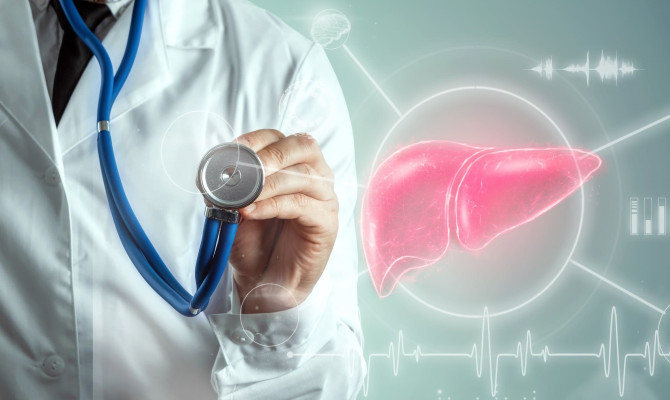Abdominal Aortic Aneurysm: An Overview

- Abdominal aortic aneurysm
- 14 Aug 2023
Overview
Understanding Abdominal Aortic Aneurysm or (AAA)
Abdominal aorta, the major blood vessel that transports blood to the lower body, is affected by abdominal aortic aneurysm (AAA), a potentially fatal medical condition.
When a portion of the aorta weakens and enlarges, which causes it to bulge or expand. An AAA can burst if untreated, resulting in severe internal bleeding and possibly lethal effects. Therefore, early detection and treatment of AAA are essential to reduce problems and enhance patient outcomes.
Men are more likely than women to have AAA, and its frequency increases with age. Smoking, high blood pressure, atherosclerosis, family history, and genetic susceptibility are risk factors for developing a AAA. Before the illness worsens and produces back or abdominal pain, patients with AAA may not exhibit any symptoms.
First, let’s quickly review the abdominal aorta’s anatomy and function.
Abdominal aorta is a fundamental artery that carries oxygenated blood from the heart to the lower body is the abdominal aorta. It is in the hollow of the abdomen. It measures about 12 cm in length and 2.5 cm in diameter. It comprises four main segments and branches, supplying the abdominal organs and walls with blood. 1Understanding abdominal aortic aneurysm | Researched based study from nih.gov

Causes
What are the causes and risk factors?
Although the precise cause of AAAs is not yet entirely understood, some risk factors have been found.
Age and gender
- AAAs are more prevalent in men and adults over 65.
- The prevalence of disease rises with age, and men have a four to five times higher risk of developing them than women, according to the Centers for Disease Control and Prevention (CDC).
- This is because as a person ages, their aorta’s walls weaken and become more prone to stretching and tearing.
Smoking
- Smoking majorly increases the likelihood of developing AAAs. The American Heart Association claims smokers have a considerably increased chance of acquiring Aneurysm compared to non-smokers.
- The chemicals in tobacco can weaken the aorta’s walls and hasten the expansion of already present aneurysms.
High blood pressure (Hypertension)
- Another risk factor for the growth of AAAs is hypertension. High blood pressure can weaken the aorta’s walls, increasing the risk of aneurysm formation.
Atherosclerosis
- This disorder, where artery plaque accumulates, can also raise the risk. Plaque accumulation can make the aorta’s walls stiff and constrictive, placing additional strain on the artery and increasing the risk of bulging or rupture.
Family history & genetics
- Families are likely to be subjected to similar environmental and socioeconomic factors, such as smoking habits and dietary and exercise regimes, which may increase their risk of AAA through the development of atherosclerotic disease.
- The NHLBI states that individuals are more likely to experience AAA themselves if a parent, sibling, or child does.
- Moreover, several hereditary conditions, such as Ehlers-Danlos syndrome and Marfan syndrome, can potentially increase the risk of AAAs.
A history of other arterial diseases, such as syphilis and tuberculosis, is another risk factor for the onset of AAAs.2causes of abdominal aortic aneurysm| Researched based study from nih.gov
Symptoms
What are the symptoms of AAA?
Asymptomatic AAAs are frequently found by accident during a regular physical examination or imaging test. If symptoms do arise, they may, however, include:
- Abdominal pain or discomfort is typically continuous and is sometimes described as a deep, gnawing sensation in the mid to lower abdomen of the back.
- The feeling of pulsation in the abdomen
- An ongoing cough that is not explained.
- Breathing difficulty
- Unaccounted-for weight loss
It is crucial to get evaluated by a doctor if these symptoms persist or are severe because other disorders can also bring them on. 2Symptoms of abdominal aortic aneurysm| Researched based study from nih.gov
Diagnosis
What diagnostic methods are used?
A physical exam and imaging studies are typically combined to diagnose a AAA. Here are a few of the most popular ways to diagnose AAAs.
Physical examination
- The medical professional performing the physical examination will feel the abdomen for any painful spots or irregular heartbeats.
- An enlarged aorta may occasionally feel like a pulsing mass in the gut.
- Further imaging studies to confirm the diagnosis will probably be ordered if the doctor has a suspicion of an AAA.
Imaging tests
Rapid advancement in patient diagnosis and endovascular care would not have been possible without concurrent advancements in vascular imaging methods.
- Ultrasound-Because of its speed, painlessness, and lack of radiation exposure, it is regarded as the best initial imaging test for diagnosing AAAs.
- CT scan-Using a combination of X-rays and computer technologies, the computed tomography (CT) scan creates precise images of the abdominal aorta. It can offer more specific information about the size, shape, and position and is more sensitive than ultrasound.
- MRI-For those who cannot undergo a CT scan because of radiation exposure concerns, it is beneficial. MRI is also used for post-procedure assessment to evaluate anatomic and functional aspects. 3Diagnosis of abdominal aortic aneurysm | Researched based study from nih.gov
- Echocardiography-The thoracic aorta, which is located near to the heart, and the size of the aortic aneurysm are both revealed by echocardiography.
- Trans esophageal echocardiography-The thoracic aorta, which is located near to the heart, and the size of the aortic aneurysm are both revealed by echocardiography. 4Diagnosis of Abdominal aortic aneurysm| Researched based study from nih.gov
- Angiography-This is regarded as a crucial stage in the standard preoperative evaluation of AAA and is especially helpful for determining crucial significant anatomic details about the aneurysm.
- Molecular imaging-This technique is used to evaluate biological patterns at molecular and cellular levels.
Treatment
What is the treatment strategy for AAA?
There is no established treatment strategy for small AAAs, although they gradually enlarge and have a minimal risk of rupturing. The patient’s size, location, and general health determine the course of treatment for an AAA. Close monitoring, regular imaging exams, and follow-ups may be advised for tiny AAAs to check for any changes in size .
Watchful waiting
- This is a minimally invasive method for treating minor AAAs with a diameter under 5.5 cm. To monitor the aneurysm’s progression, patients are routinely examined with imaging tests and follow-ups.
An endovascular surgical repair
- For larger AAAs or ones that are overgrowing, surgery is suggested.
- The most common surgical procedure for AAA is open repair, which involves creating an abdominal incision and replacing the weak aorta segment with a synthetic graft.
- Available repair, an invasive procedure with a protracted recovery period, lowers the likelihood of long-term issues. 5Treatment of abdominal aortic aneurysm| Researched based study from nih.gov
Fenestrated stent grafts
- These are developed to provide an endovascular treatment option to the patients suffering from AAA.
- They are customized according to the location of visceral arteries.
- They are designed in a way to preserve the flow to essential visceral and renal vessels.
Lifestyle Modifications
To lower the risk of problems and enhance general health, lifestyle modifications are advised for all AAA patients. These adjustments include
- Giving up smoking
- Managing high blood pressure and cholesterol levels
- Keeping a healthy weight
- Exercising frequently.
A multidisciplinary strategy is needed for AAA management that considers the aneurysm’s size and location and the patient’s general health.
Complications
What are the possible complications?
Severe complications can occur if aneurysms are not treated. Listed below are some of the complications which need to be taken care of
Rupture
The most serious and potentially fatal complication it happens when the aneurysm ruptures due to its thin walls, resulting in severe internal bleeding.
The signs and symptoms include-
- Hypotension
- Nausea
- Sharp & intense abdominal pain.
Dissection
One of the uncommon but significant consequences of AAA is aortic dissection. It happens when a tear forms in the aorta wall’s inner layer, allowing blood to seep into the wall’s layers.
signs of an aortic dissection are-
- Sweating
- Breathing difficulties
- Sudden acute chest discomfort
- Sudden acute back discomfort
An urgent medical response is needed for aortic dissection.
Additional complications
AAAs can result in several additional consequences besides rupture and dissection, such as:
- Thrombosis: When blood clots develop inside an aneurysm, they can impede blood flow and raise the risk of rupture.
- Embolization: As blood clots or other bodily debris escape from an aneurysm, they can move to other places of the body where they may cause blockages or organ damage.
- Compression: As the aneurysm expands, it may press on adjacent organs, resulting in discomfort and other symptoms.
- Aneurysms that are infected with an infection are uncommon but can develop when bacteria or other pathogens invade the weakening walls of the aorta. 6Complications of abdominal aortic aneurysm| Researched based study from nih.gov
Prevention
What are the ways to prevent AAA?
There are several actions people can take to stop AAA from developing and progressing. This post will discuss preventing AAA through lifestyle changes, screening, and early identification.
Lifestyle changes
Several lifestyle modifications can help lower the risk of getting a AAA or slow its development. They consist of
- Giving up smoking can help decrease the growth of an existing aneurysm and lower the likelihood of developing new ones. Smoking poses a serious danger for AAA.
- Weight control: Maintaining a healthy weight can reduce the risk of AAA associated with obesity.
- Increased cardiovascular fitness and a regular exercise regimen can minimise the incidence of AAA.7Prevention of abdominal aortic aneurysm| Researched based study from https://amj.amegroups.com/
Early detection and screening
Early AAA identification enables quick treatment, which can stop the development of problems, including rupture and dissection.
- Some people who could benefit from AAA screening include males and females with a history of AAA
- People who have atherosclerosis, a condition where the arteries constrict and stiffen.
- Individuals who have high cholesterol or blood pressure.
- Those who have a history of coronary artery disease or peripheral arterial disease.8prevention of abdominal aortic aneurysm| Researched based study from nih.gov
Awareness
- To understand their risk factors and take action to stop its advancement or development, people must be aware of AAA. Screening is essential to discover and treat AAA early because it frequently has no symptoms until it ruptures. Those with AAA risk factors need to talk to their doctor about screening possibilities.
- Also, people must be aware of the signs of a ruptured AAA, including excruciating back or abdominal pain, quick onset of sweating, nausea, vomiting, and unconsciousness.
- Anyone experiencing any of these symptoms ought to contact a doctor right away.
Outlook
Outlook
If left untreated, abdominal aortic aneurysm has the potential to be deadly. You need to keep an eye on your symptoms and, if they don’t go away, contact a doctor. Diet, regular exercise, and lifestyle changes are all actions that can help halt the progression of illness. To stop aneurysm from growing further, early identification is crucial.
In the clinical setting, a pharmaceutical treatment for AAA is therefore anticipated. Clinical studies have used pharmacological substances, and various therapeutic effects have been noted in experimental models. The growth rate of AAA in humans appears to be slowed down by statin, angiotensin-converting enzymes, antibiotics, and anti-inflammatory drug therapy.
Surgery and post-operative care can be effectively managed with the help of the steps that are outlined and by maintaining a healthy lifestyle.
Any feedback on this article?
 This Articles content was accurate
This Articles content was accurate Very Informative Article
Very Informative Article I have a question or a comment
I have a question or a comment
 This article contains inaccurate content
This article contains inaccurate content This article was not helpful
This article was not helpful I have a question or a comment
I have a question or a comment
We appreciate your helpful feedback!
Checkout our social pages
References
-
National Institutes of Health
Anatomy, Abdomen and Pelvis, Abdominal Aorta | Understanding
-
National Heart, Lung, and Blood Institute
AORTIC ANEURYSM | Causes
-
National Heart, Lung, and Blood Institute
AORTIC ANEURYSM | Diagnosis
-
National Institutes of Health
Diagnosis and monitoring of abdominal aortic aneurysm: current status and future prospects
-
National Institutes of Health
Management of abdominal aortic aneurysm | Prevention | Detection |
-
National Institutes of Health
Surgical Complications after Open Abdominal Aortic Aneurysm Repair: Intestinal Ischemia, Buttock Claudication and Sexual Dysfunction
-
Amj.amegroups.com
Abdominal aortic aneurysm | Prevention | Detection | Management
-
National Institutes of Health
Early Detection of Undiagnosed Abdominal Aortic Aneurysm and Sub-Aneurysmal Aortic Dilatations in Patients with High-Risk Coronary Artery Disease






































